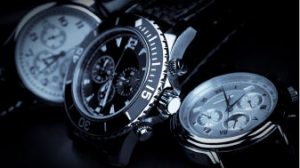Counterfeiting and piracy cost the global economy around $4.2 trillion a year. This negatively impacts economies, brands and individuals. Fake products threaten businesses, and they can be dangerous for consumers.
The Economic Cost of Piracy
The International Chamber of Commerce (ICC) and International Trademark Association (INTA) published a joint report into counterfeiting and piracy in 2017. It estimated that by 2022 the global trade in fraudulent products would be worth $2.3 trillion. In addition, displaced economic activity, investment, public fiscal losses and expenditure on criminal enforcement would cost economies an extra $1.9 trillion.
Counterfeiting and piracy threaten legitimate jobs. The report estimates 5.4 million legitimate jobs are being put at risk across a wide variety of sectors. The European Union (EU) reckons 84 million people, 38.9 percent of all EU jobs, are in industries that rely on the protection of intellectual property rights (IPR). In total, they account for 45 percent of total GDP. If IPR are not protected on a global scale, the livelihoods of these people, and millions more around the world, are being put at risk.
The Domestic Cost Of Piracy
Consumers may think IPR is unimportant to them; that is does not impact them. This attitude is short-sighted.
A 2019 study found most fake goods were consumer products. The Organization for Economic Co-operation and Development (OECD) believes fake goods now make up 3.3 percent of world trade, and that figure is rising. Footwear is the most heavily bootlegged industry (22 percent), followed by clothing (16 percent), leather goods (13 percent) and electrical equipment (12 percent).
Counterfeit products are substandard. Legitimate manufacturers ensure products conform to market requirements on safety and performance. Counterfeiters do not. They are trading on a legitimate name but without the proper testing regimes and quality management systems in place to ensure products are safe and secure.
This is of particular concern when the product may cause harm to buildings or consumers. Examples include electrical products with substandard wiring that can give an electric shock or start fires and fake toys and jewelry that could contain harmful substances.
Another even more worrying trend is the rise in counterfeit pharmaceuticals. Counterfeiters work fast and they have very quickly found ways to hijack the COVID-19 vaccine rollout. In some countries unofficial, pay-for-a-jab services have been found to be administering a fake serum. In Mexico, 80 people paid $1,000 for a counterfeit vaccine and, in Poland, illegal jabs that had not yet reached the market were found to contain an anti-wrinkle treatment.
Where there is demand but a limited supply, there will always be an opportunity for criminals to introduce a counterfeit and substandard product.
Fighting Illicit Trade
To protect their IPR, legitimate brands spend a considerable percentage of their turnover every year on fighting illicit trade (FIT). Fraudulent products decrease their sales and, because they can potentially hurt the consumer, they can also damage their brand.
Companies have traditionally relied on retaining specialist lawyers in territories where they think they need to protect their IPR. This approach is expensive and isn’t always effective because it largely relies on reaction rather than proactive effort.
A more efficient method is to use Application for Action (AFA) and Memorandum of Understanding (MOU). These documents allow a brand to assert their IPR in a particular country. It places an obligation on local customs and law enforcement authorities (LEA) to enforce their IPR in cases of counterfeiting.
AFA and MOU are made in targeted countries. They are then supported by a global surveillance network utilizing AI (Artificial Intelligence) analytics, on-the-ground inspectors, and specialist training for LEA officers in new suspicious shipment profiling techniques. This new approach reduces costs, improves flexibility and optimizes brand protection.
SGS FIT IPR
SGS FIT IPR utilizes AFA and MOU to create an efficient protection strategy that builds on insights into fraudulent activity gained via AI analytics. The FIT IPR+ Platform allows rights holders to operate in real-time, integrating AFA/MOU and transmitting updates to relevant authorities.
This comprehensive IPR protection solution lets rights holders maintain control over their AFA/MOU, while giving them access to high level data analytics. In addition, SGS’s on-the-ground specialists will act as the intermediary between the rights holder and local enforcement authority, collecting samples, inspecting suspicious goods, and delivering decisions about authenticity.
For brands, the advantages are:
- Optimized IPR protection strategy targeting the right countries;
- Greater flexibility to react to new threats;
- Lower costs; and
- Local knowledge, global experience — SGS understands local customs and markets and acts as the rights holder’s intermediary.
For consumers, the advantages are that counterfeit and substandard products are seized at borders and do not end up in their homes.
August 13, 2021





